Pennsylvania’s Tacony Creek Trail
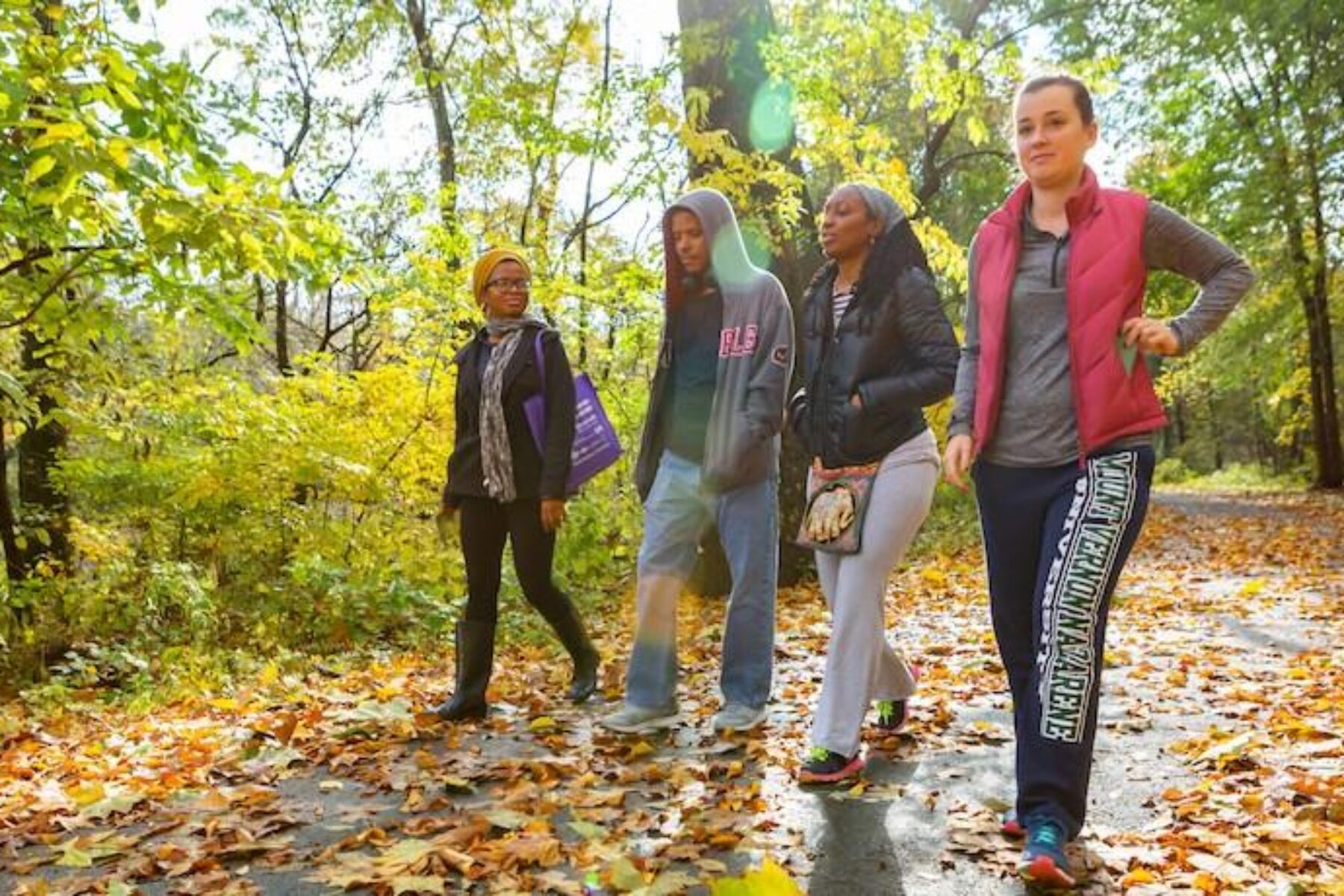
Trail of the Month: June 2020
“Once people get on a trail and get next to water, it’s much easier to talk to them about…being good water stewards.”
—Julie Slavet, the executive director for Tookany/Tacony-Frankford Watershed Partnership
Philadelphia is tucked between two major rivers, the Delaware to the east and the Schuylkill to the west; between them, Tacony Creek—a tributary of the Delaware—runs its course through the city’s northeast neighborhoods. In this densely populated pocket, the 3.2-mile Tacony Creek Trail, paved and smooth as a river stone, flows along the waterway under the hush of tall old-growth trees.
“I love having someplace that’s right smack in the city that gets you away from the traffic lights and noise, so it’s almost like being out in the country,” enthused Lisa Kuzma, a longtime local resident and director of Olney Christian School, which lies adjacent to Tacony Creek Park.
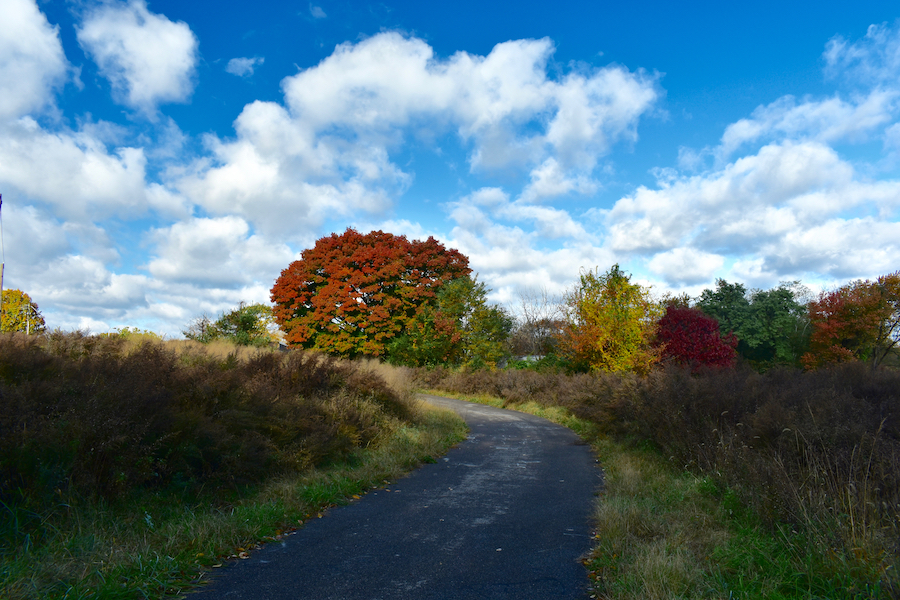
Within this green oasis, Julie Slavet, the executive director for Tookany/Tacony-Frankford Watershed Partnership (TTF), notes that more than 100 species of birds can be found, including the commonly spotted great blue herons and red-tailed hawks. This wildlife-rich environment—the watershed—is integral to the trail experience, and the trail in turn presents the opportunity to learn about its value.
“We know that trails are important because they get people next to water,” explained Slavet. “Once people get on a trail and get next to water, it’s much easier to talk to them about stormwater management and runoff and being good water stewards.”
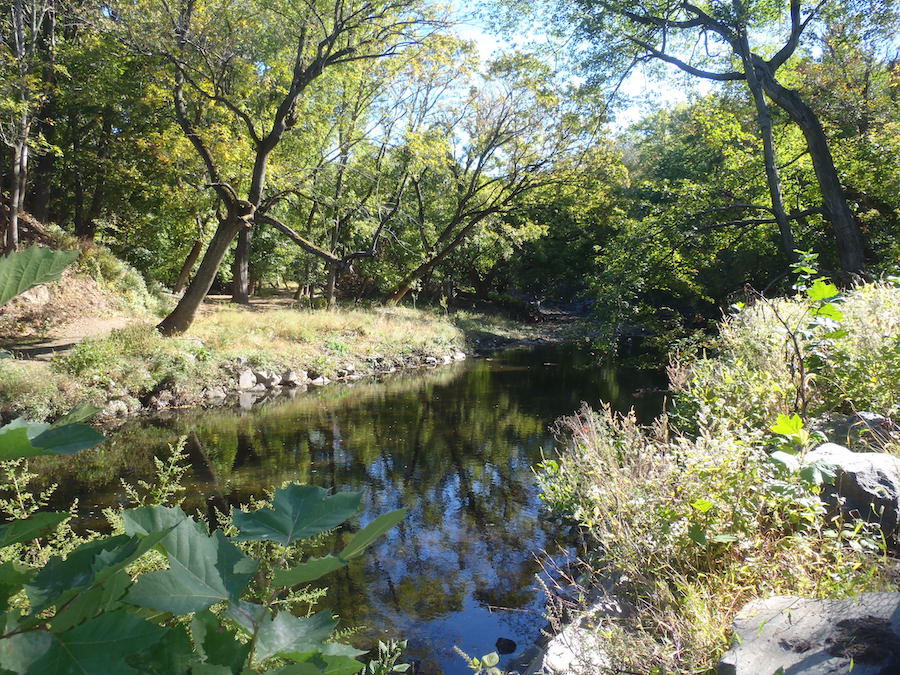
The inviting presence of the trail coupled with the community events and educational programming that TTF provides have made noticeable changes in the creek over time.
“The creek used to be so disgusting and that was part of not wanting to use the park,” said Kuzma. “There were grocery carts and people just dumping in there, and it smelled to high heaven all the time. Now, the water’s clear and you can see to the bottom—it’s a nice little trickling brook, like it should be!”
Rob Armstrong, Philadelphia’s trails and transportation program manager, remembers the massive cleanup of the creek that took place as the trail’s first four gateways were being established. “I’m talking about bags and bags of trash, tires and mattresses. When you have all that junk being dumped, it goes into the creek, and in Philadelphia, all of our creeks feed into our drinking water. It was also unsightly for citizens that wanted to use the park. We knew that we had to reactivate that space.”
Access for All
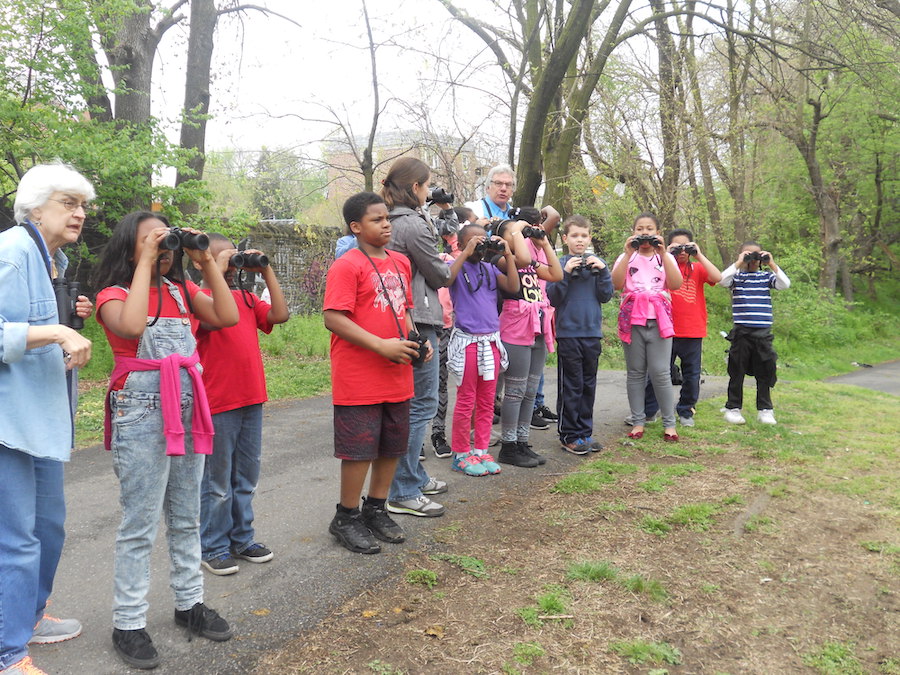
Surrounding the 300-acre park are working-class neighborhoods and large communities of immigrants in one of the most culturally diverse areas of the city. In addition to the focus on the water itself, ensuring access the watershed’s green space in this disadvantaged and urbanized area was especially important.
“These neighborhoods are among the most challenged ZIP codes in Philadelphia,” said Slavet. “The 19120 and 19124 codes are predominantly Spanish speaking and have challenges in terms of resources and income.”
Working hand-in-glove with the city, TTF—which was launched by the Philadelphia Water Department in 2000—offers a variety of opportunities for residents to engage with and become better stewards of the park. Nature walks, bird counts, history talks, block parties, volunteer cleanups, running groups and many other types of programming—including bilingual activities—are part of continuing efforts to forge these connections and create a positive space for the community. In the City of Brotherly Love, philanthropic partners, like the William Penn Foundation, have been critical for supporting this work.
The Tacony Creek Trail also played a key role in uniting the upper and lower halves of the park, creating a continuous route from one end to the other that could increase usage for both recreation and transportation.
“There isn’t a lot of pedestrian and bike access in the [Montgomery County] township, so residents there really expressed an interest in making their community more walkable and bikeable.”
—Julie Slavet
“Prior to the trail, the park was essentially in two parts, bisected by Roosevelt Boulevard, which is a major artery,” said Armstrong. “It’s one of the most dangerous highways in the United States. Citizens north of the boulevard had access to an existing trail that was built in the 1970s. When we got a grant, we realized that the lower portion of the trail—below the boulevard—should be focused on first, and then the connection that needed to be made underneath the boulevard would be built to join the two sections.”
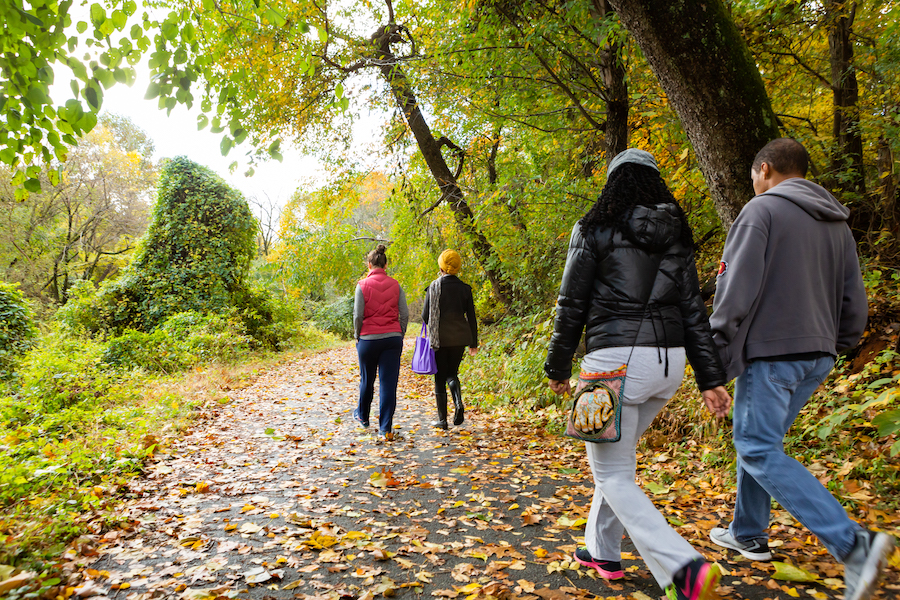
As the two new segments of trail opened in 2013 and 2018, respectively, Kuzma was enthused. “Being able to go under the boulevard is huge in terms of increasing use and making it safer. Crossing the boulevard before was like taking your life in your hands.”
The Tacony Creek Trail is also now on the cusp of expanding its reach in both directions and is fitting into larger systems that amplify its value. On its northern end, a planned extension will connect Philadelphia County to its northern neighbor.
“About a year ago, we received approval for a feasibility study to take this trail into Montgomery County; it would add another 3 miles,” said Slavet. “We knew how important that would be for the citizens of Cheltenham. There isn’t a lot of pedestrian and bike access in the township, so residents there really expressed an interest in making their community more walkable and bikeable.”
And on its southern end, the closure of a short gap between the Tacony Creek Trail and the Frankford Creek Greenway would bring travelers down to the Delaware River and tie the trail into the East Coast Greenway, a vast web of connecting trails along the entire Eastern seaboard. Both creekside pathways are also part of the Circuit Trails, a regional network encompassing 800 miles of trails in Greater Philadelphia and New Jersey.
Seeing the Big Picture
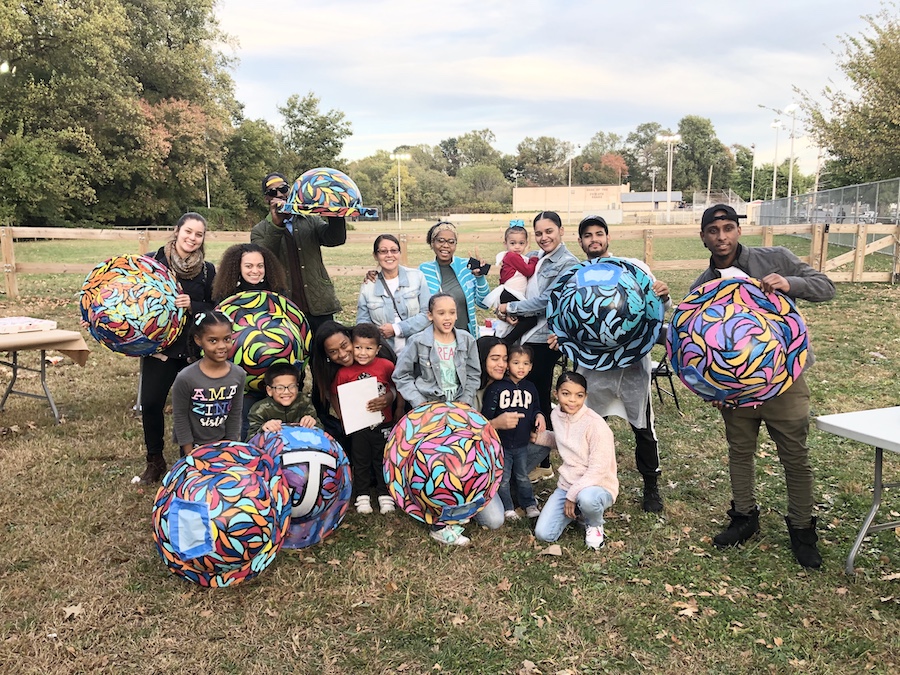
What do a butterfly, a fox and a turtle have in common? These critters were all painted by local artist Jay Coreano on the trail’s pavement as part of a “Love Our Park” community project. Large bird murals, designed by the nonprofit Visual Urban Renewal & Transformation, also brighten the walls of the trail’s underpasses and celebrate the wildlife to be found here.
“I was born and raised in this area and I had never been there,” said Coreano. “These paintings are bringing awareness to the trail and awareness of the accessibility we have to nature, and the escape that we have literally at our backyards.”
Another art project that Coreano oversaw—not in the park, but rather leading up to it—offered a creative approach both to combatting litter and providing wayfinding. The lids of nearly two dozen trash cans that line Cayuga Street were painted with whimsical designs by local families and serve as visual breadcrumbs leading from the park to the nearby recreation center.
“That was one of the first times that I’d really seen my community show up for a greater cause,” said Coreano. “When it’s something that has to deal with our home and our community, people really show up.”
Coreano says he has been receiving quite a bit of positive feedback on the art and looks forward to exploring the park and trail more himself. “I’m just now taking advantage of it because I really wasn’t aware of it before,” he noted. “Even though I’m familiar with the area, once I go on the trail, it’s all new.”
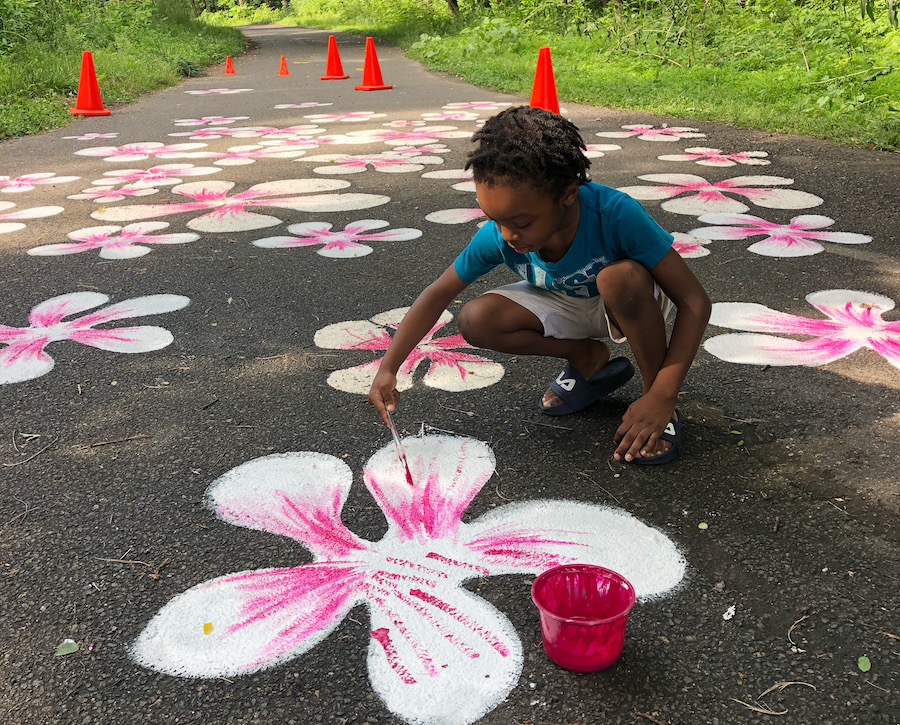

Donate
Everyone deserves access to safe ways to walk, bike, and be active outdoors.
